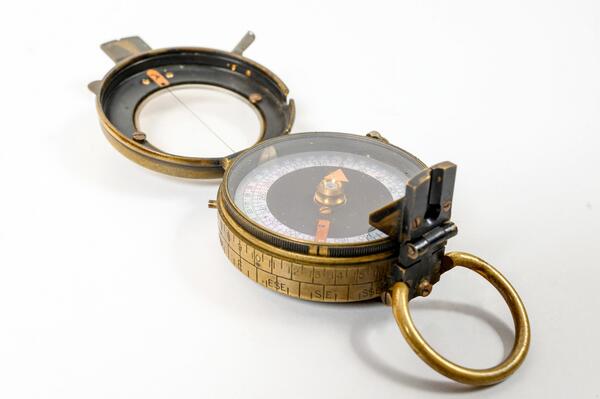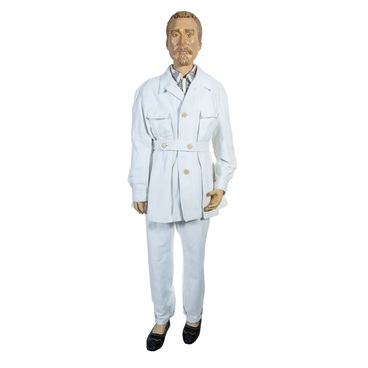Verner’s Patent Compass was developed by a British Colonel William Willoughby Cole Verner — a military servant, writer, ornithologist, professor of topography at the Royal Military Academy Sandhurst. During his service, Verner created various navigation devices.
In 1891, he published his work “Some Notes on Military Topography”, where he described his own model of the compass and concluded that the British army needed such pocket-type compasses. The model of compasses released in 1895 was named after Verner. For the next 50 years, it was produced by different companies. New models also appeared, ranging from Mark III to Mk IX. The ninth version of the compass was created in 1942.
The most popular models of the Verner’s Patent compasses were VII and VIII, which were used by soldiers in the First World War. There was a glass prism inside the case of each compass, which increased the accuracy of determining coordinates and enabled to determine the exact location, as well as the directions to it.
Several English and French companies produced the devices of this brand under license. The compass from the collection of the National Museum of the Republic of Mari El was made in France in 1918. There is a logo F-L on its reverse side which means French Limited. That same year, in 1918, those compasses were put to use on the Western Front during the First World War. The trademark of state inspection in the form of a wide arrow on the compass case has survived. The mark means that the compass was officially accepted for service in the army of the Triple Entente — a military understanding between Russia, Great Britain and France, which was formed in 1907 and operated until the end of the First World War.
During the Great Patriotic War, the compass belonged to a serviceman Pavel Kursov — a native of the Mari ASSR. In 1944, he fought on the Karelian Front. After the war, Kursov donated the compass and other his belongings to the collection of the Timofey Yevseev National Museum of the Republic of Mari El.
In 1891, he published his work “Some Notes on Military Topography”, where he described his own model of the compass and concluded that the British army needed such pocket-type compasses. The model of compasses released in 1895 was named after Verner. For the next 50 years, it was produced by different companies. New models also appeared, ranging from Mark III to Mk IX. The ninth version of the compass was created in 1942.
The most popular models of the Verner’s Patent compasses were VII and VIII, which were used by soldiers in the First World War. There was a glass prism inside the case of each compass, which increased the accuracy of determining coordinates and enabled to determine the exact location, as well as the directions to it.
Several English and French companies produced the devices of this brand under license. The compass from the collection of the National Museum of the Republic of Mari El was made in France in 1918. There is a logo F-L on its reverse side which means French Limited. That same year, in 1918, those compasses were put to use on the Western Front during the First World War. The trademark of state inspection in the form of a wide arrow on the compass case has survived. The mark means that the compass was officially accepted for service in the army of the Triple Entente — a military understanding between Russia, Great Britain and France, which was formed in 1907 and operated until the end of the First World War.
During the Great Patriotic War, the compass belonged to a serviceman Pavel Kursov — a native of the Mari ASSR. In 1944, he fought on the Karelian Front. After the war, Kursov donated the compass and other his belongings to the collection of the Timofey Yevseev National Museum of the Republic of Mari El.



